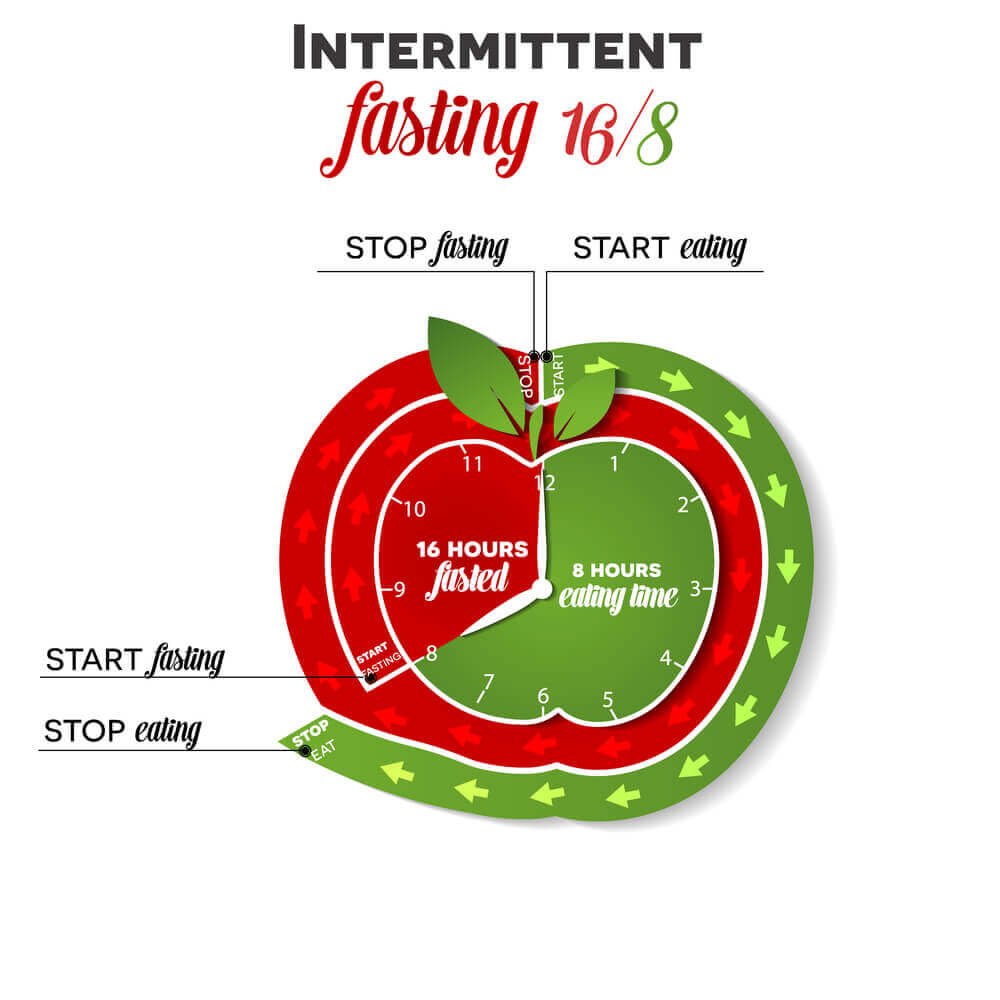You may have heard about intermittent fasting, especially considering its recent popularity among women aiming to improve their health. Different women use intermittent fasting for various reasons, but the most common goal is weight loss. Unlike traditional diets that focus on what to eat, intermittent fasting centers on when to eat. It involves incorporating regular periods of fasting into your routine, which can lead to significant benefits for women seeking a healthier lifestyle.
Intermittent fasting can result in reduced calorie consumption, aiding in weight loss and potentially lowering the risk of cardiovascular diseases, such as diabetes and heart disease. However, studies indicate that intermittent fasting may affect men and women differently. Women, in particular, may need to adopt a modified approach to this fasting strategy to achieve optimal results. Below is a guide specifically tailored to women who are considering intermittent fasting.

What is Intermittent Fasting?
Intermittent fasting (IF) refers to an eating pattern where you cycle between periods of eating and fasting. There are several variations of this method, but the most common involves fasting for 16 hours and eating during an 8-hour window. One advantage of intermittent fasting is that it doesn’t restrict what you eat, only when you eat, making it more of a lifestyle than a diet.
Many women are drawn to intermittent fasting because of its flexibility. Unlike fad diets, intermittent fasting doesn’t come with long lists of restricted foods. You have the freedom to eat a wide variety of meals, provided they fit within your chosen eating window. This can make it an attractive option for women who want to maintain a balanced diet without feeling deprived.
Additionally, intermittent fasting can help simplify meal planning and reduce the mental load of constantly tracking calories or worrying about every bite you take. For women juggling multiple responsibilities—work, family, personal fitness—this simplicity can be a major relief.
How Does Intermittent Fasting Affect Women?
Intermittent fasting affects men and women differently, and it’s important to understand these distinctions when considering this eating pattern. Women’s bodies are more sensitive to calorie restriction because of the hormonal balance required to support reproductive health. As a result, women may need to modify their fasting routines to avoid negative side effects.
For instance, while intermittent fasting may help reduce blood sugar levels and increase insulin sensitivity in men, some studies have shown that women experience worsened blood sugar control when fasting too frequently or for extended periods. Additionally, some women report disruptions in their menstrual cycles when adopting strict fasting protocols. These disruptions occur because calorie deficits can impact the hypothalamus, a part of the brain responsible for regulating hormones, including those related to reproduction.
To protect their reproductive health, women need to take a more measured approach to intermittent fasting. A balanced regimen with shorter fasting windows and fewer fasting days per week can help women reap the benefits of intermittent fasting while avoiding hormonal imbalances.
Best Types of Intermittent Fasting for Women
Not all fasting methods work the same for everyone, and this is particularly true for women. Since women may need to take a more cautious approach to fasting, the following methods are best suited for female fasters:
Modified Alternate-Day Fasting
This involves fasting every other day but consuming around 500 calories on fasting days. On non-fasting days, you eat normally, which allows your body to recover and maintain essential functions while still achieving caloric restriction.
Many women find this method to be sustainable over the long term because it doesn’t require daily fasting. The added flexibility makes it easier to stick to, and it helps to minimize feelings of deprivation that might otherwise occur with more rigid fasting plans.
Crescendo Method
The Crescendo Method involves fasting for 12 to 16 hours two to three non-consecutive days a week. This method gives women the flexibility to choose fasting days that best suit their schedule. It’s a gentler approach that allows women to space out fasting days, which helps to minimize hormonal disruptions and stress on the body.
Women who are new to intermittent fasting often find this approach to be a good starting point. The spaced-out fasting days offer the benefits of intermittent fasting without the pressure of maintaining a strict daily regimen.
The 16/8 Method
This method is one of the most popular forms of intermittent fasting, involving a 16-hour fasting window followed by an 8-hour eating window. Women are encouraged to begin with a 14-hour fasting window and gradually increase it to 16 hours if they feel comfortable doing so.
The 16/8 method is easy to integrate into a busy lifestyle, making it a favorite among women who want to balance their fasting goals with their everyday responsibilities.
The 5:2 Diet
In the 5:2 method, you eat normally for five days and restrict calories to about 500 on the other two days. These two days should not be consecutive. This approach allows women to maintain a more normal eating pattern on most days of the week, reducing stress while still delivering results.
Eat-Stop-Eat
This method involves fasting for 24 hours once or twice a week. Although it may sound intense, many women find that the occasional full-day fast provides them with a mental and physical reset. However, it’s important to limit fasting to no more than two full days a week to avoid negative health effects.
Health Benefits of Intermittent Fasting for Women
Intermittent fasting offers several health benefits, many of which are particularly relevant for women. These benefits range from improved heart health to weight management and beyond. Below are some of the most significant health benefits for women:
Improved Heart Health
Heart disease is a leading cause of death among women, and intermittent fasting has been shown to reduce the risk factors associated with cardiovascular disease. Research suggests that fasting can lower cholesterol levels, blood pressure, and inflammation, all of which contribute to heart health.
In one study, obese women who followed an intermittent fasting plan for eight weeks saw their blood pressure decrease by 6%. Lowering blood pressure and reducing cholesterol can significantly lower the risk of heart attack and stroke, making intermittent fasting a potentially valuable tool for women looking to protect their heart health.
Weight Loss
Weight loss is one of the most common reasons women turn to intermittent fasting. Because fasting helps control calorie intake, it creates a caloric deficit that can lead to fat loss. Additionally, by consolidating eating into specific windows, many women find that they eat fewer overall calories without needing to track every meal.
A review of multiple studies found that women following intermittent fasting plans lost an average of 3-8% of their body weight over 3-24 weeks. Furthermore, participants saw a reduction in waist circumference by 3-7%, indicating that fasting can help specifically target visceral fat, which is a risk factor for metabolic diseases.
Diabetes and Insulin Sensitivity
Type 2 diabetes is a growing concern for women, especially as they age. Intermittent fasting can help lower the risk of developing diabetes by improving insulin sensitivity and lowering insulin levels.
One study conducted on overweight women showed that after six months of intermittent fasting, insulin levels dropped by 29%, and insulin resistance improved by 19%. These improvements reduce the risk of developing type 2 diabetes and make intermittent fasting an effective option for women with pre-diabetes or insulin resistance.
Psychological Well-Being
Intermittent fasting can also have positive effects on mental health. Women who fast intermittently often report feeling more in control of their eating habits, which can lead to reduced feelings of guilt and stress around food. Additionally, some studies suggest that fasting may improve mood and reduce symptoms of depression and anxiety.
Women struggling with emotional eating or binge-eating tendencies may find intermittent fasting particularly helpful. By providing structured eating windows, fasting can help break the cycle of mindless snacking and emotional overeating.
Lower Inflammation
Chronic inflammation is linked to a wide range of health problems, from autoimmune disorders to cancer. Intermittent fasting has been shown to reduce inflammation markers in the body, potentially lowering the risk of these conditions.
Getting Started with Intermittent Fasting
If you’re new to intermittent fasting, the first step is choosing a method that fits your lifestyle. It’s important to start slowly, especially if you’re concerned about potential side effects. Many women find that beginning with the Crescendo Method or a modified 16/8 plan is a good way to ease into fasting.
During your fasting windows, focus on staying hydrated by drinking water, herbal teas, or black coffee. Staying hydrated helps curb hunger and ensures that you’re not mistaking thirst for hunger.
On your eating days, make sure to nourish your body with nutrient-dense foods. Just because you’re not eating during certain periods doesn’t mean you should skimp on nutrients when you are eating. Focus on whole foods like fruits, vegetables, lean proteins, and healthy fats to support your health and keep you energized.
Safety and Side Effects
For most women, intermittent fasting is a safe and effective way to lose weight and improve overall health. However, some may experience side effects such as headaches, irritability, and fatigue, particularly in the early stages of fasting. These side effects typically subside as your body adapts to the new eating schedule.
Women who are pregnant, breastfeeding, or dealing with certain medical conditions should consult with their doctor before starting intermittent fasting. Additionally, women with a history of eating disorders may want to avoid fasting, as the restrictive nature of fasting could trigger unhealthy behaviors.
At ShapioX, we provide resources, recipes, and support tailored specifically to women’s unique health needs. If you’re considering intermittent fasting or any other weight loss strategy, we’re here to help. Explore our website to find personalized tools and programs designed to support your journey to a healthier, more balanced lifestyle.


